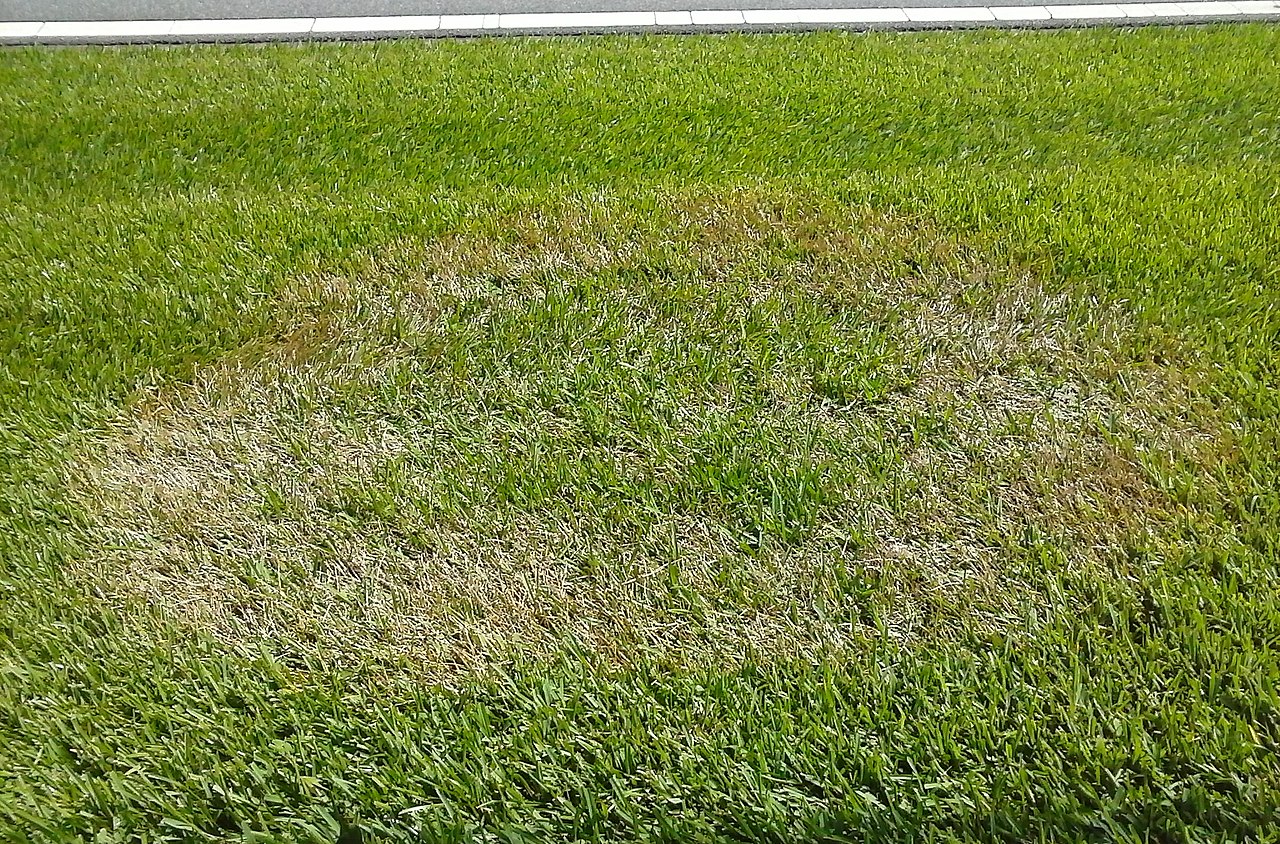Seeing brown spots in your yard? We Texans live in a region with hot temperatures and high humidity, so you bet you may find your lawn infected with Brown Patch lawn disease.
Read below for some frequently asked questions regarding the lawn intruder and tips to get your lawn healthy again.
So, what is this disease?
Brown Patch lawn disease is a common and widespread problem caused by Rhizoctonia solani fungus. The disease can infect a variety of common turfgrasses but the most susceptible grass species include perennial ryegrass, tall fescue, and the bentgrasses.
Brown Patch can also become a problem to Kentucky bluegrasses in mid-to-late summer during extended periods of high temperature and humidity.
How do I know if my lawn has this disease?
The first step to identifying: Do you see spotting on your leaf blades? If you see spotting on your leaf blades—which can eventually bleed together to turn the entire leaf brown—suspect Brown Patch is invading your lawn.
More obvious signs are circular areas of brown and dead grass surrounded by a narrow, dark ring. Patches are typically irregular and can be quite large, as this disease can spread fast.
This spotting can take on different appearances depending on the characteristics of the grass it infects:
Closely mown grasses: Any grass you should cut short, like some Zoysias, will show circular rings of brown patches and an expanding gray ring on the outer edge—most noticeable when the grass is damp, especially in the early morning hours.
High-cut grasses: Grasses that are kept taller often exhibit circular or nearly circular brown areas, but without the visible details of gray exterior.
Tall fescue: Tall fescue varieties often don’t exhibit the characteristic circular patterns. Rather, the fungus will appear on scattered blades of grass, so that the whole lawn may seem a little “off,” with a tannish cast rather than the vibrant green you want to see.
Why is this showing up now?
Brown Patch thrives when hot weather and high humidity settle in during the summer months. Your yard can (and if you have it, most likely did) become infected during a period of cooler temperatures. The disease can take hold and develop well below 80 degrees Fahrenheit, but doesn’t spread and become apparent to the naked eye until temperatures and humidity levels rise. Dew, mist, or rain on leaf blades in these conditions can contribute to the rise of Brown Patch.
How can I get my lawn healthy again?
The fungus that causes Brown Patch lawn disease is present in many areas. Disease prevention is very difficult if the grass species is susceptible.
Proper watering in midday to prevent wet grass at night may be of some, but limited benefit. Proper mowing on a frequent basis to promote air movement and drying of the leaf blades may be of more benefit when battling Brown Patch.
Removing dew or guttation water that collects on the grass leaves each morning has proven effective as an aid in reducing brown patch. This removal can be achieved by mowing or by dragging a water hose across the area.
More tips for treating:
Use moderate amounts of nitrogenous fertilizer.
Fungicides can be effective if applied before the onset of the disease, but should only be used on high-value ryegrass or bentgrass turfs.
Don’t over- or under-fertilize your turf, as that can encourage Brown Patch.
Can I get help from a professional?
First Response Lawn Care specialists know exactly what your lawn needs and what changes you may need to make to achieve a lawn you’ll love. If you suspect your lawn is infected or you’re worried it may become so, give one of our specialists a call to set you up on a plan for a healthy lawn.
To schedule a consultation with one of our Lawn Treatment Specialists, call (214) 701-7622. You’ll be on your way to finding out how to remedy that sad, brown lawn, and rebuilding the healthy, green lawn you want.

